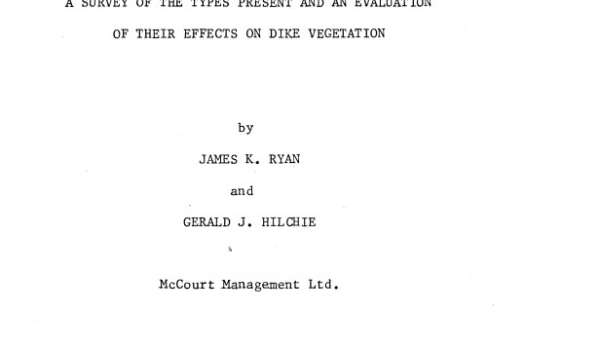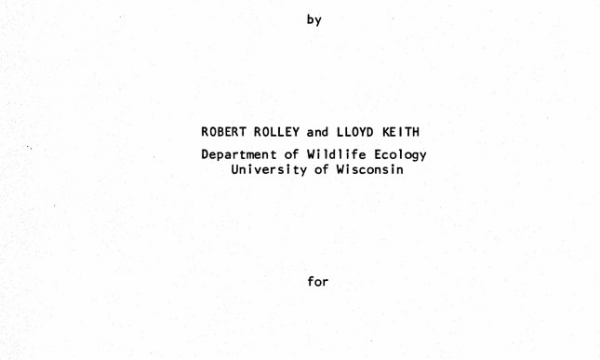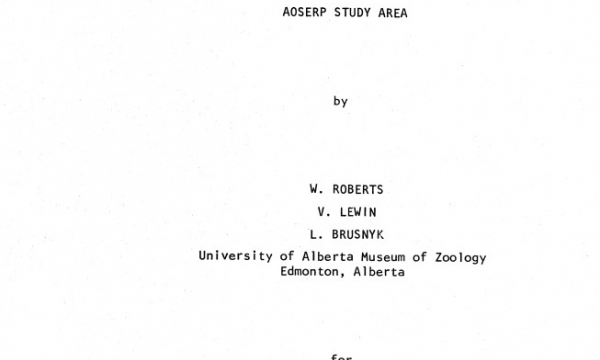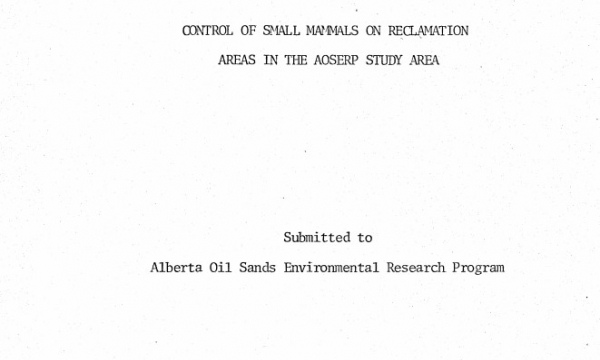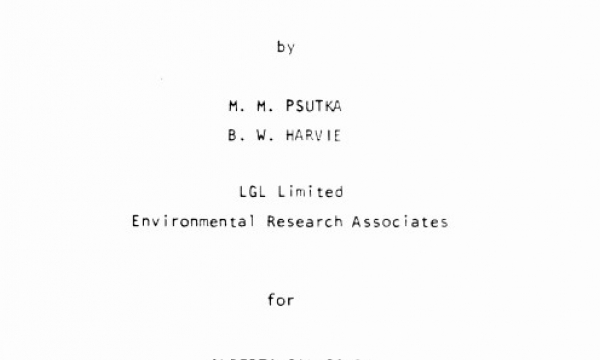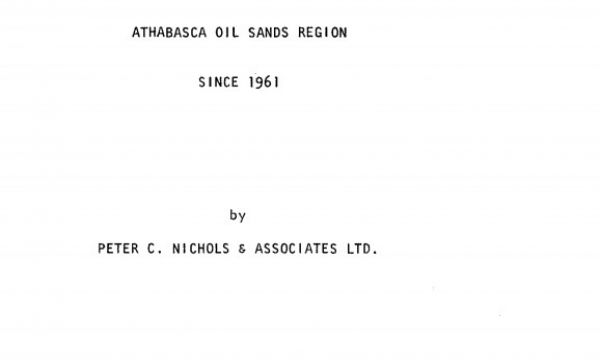Land Management Resources
Resource
Authors
James Ryan
Gerald Hilchie
Representatives of 50 insect families were collected in sweep net samples, and additional families were observed to be present on the Suncor dike. Insect attacks were severe on conifer trees
Resource
Biomass of insects collected averaged 0.82 g oven-dry weight m-2, and ranged from 0.28 (Jack Pine forest) to 3.11 (fen) grams. Use of insects as environmental monitors is discussed
Resource
Authors
Randy Rudolph
M.M. Oleskiw
R.A. Stuart
Climatological analysis of recent data from the MAPS network of automatic meteorological data acquisition, forestry lookout stations, minisondes, pack surveys, and the Fort McMurray station
Resource
Authors
Robert Rolley
Lloyd Keith
This paper reviews moose habitat selection and discusses the environmental factors which affect selection
Resource
Authors
W. Roberts
V. Lewin
L. Brusnyk
Wood frog (Rana sylvatica) was the most abundant and widespread species in 20 sites examined. Boreal chorus frogs (Pseudacris triseriata maculata) and Canadian toads (Bufohemiophrys) found at
Resource
Authors
Renewable Resources Consulting Ltd.
Control rodent damage by: (1) Planting trees and shrubs when rodent numbers are at the low or declining phase of their cycle, and (2) Manipulating rodent numbers by manipulating vegetative cover.
Resource
Physical changes evident at tributary confluences were Secchi visibility, current velocity, and flow direction. At the tributary mouths, sand and silt substrates were predominant in sheltered areas
Resource
Authors
William Phillips
Denis dePape
Leonard Ewanyk
50,170 Albertans engaged in nonconsumptive fish and wildlife use in the AOSERP study area for a total of 83,393 recreation days during 1975-76.
Resource
Authors
Peter C. Nichols & Associates Ltd.
Population growth in Fort McMurray (from 1200 people to 25,000) necessitated the institution and continuous expansion of a service delivery system, including urban infrastructure and social services
Resource
Authors
Peter C. Nichols & Associates Ltd.
Study to review the economic evolution of the Athabasca Oil Sands region since 1961 including an analysis of historical growth in the local business sectors of Fort McMurray and Fort Chipewyan


